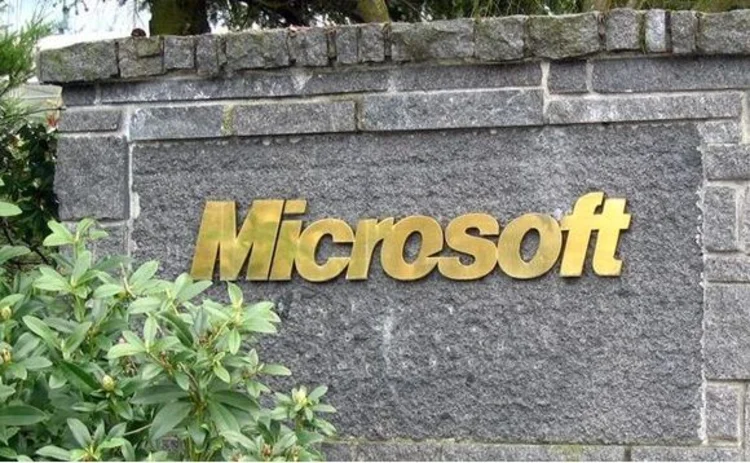Microsoft exec outlines ambitious capital markets strategy
As banks take a cautious approach to generative AI, Bill Borden believes Microsoft’s “copilots” will prove transformative in the capital markets.

The term “smartphone” often conjures the image of an Apple iPhone, even though it’s but one of many options on the market. The same can be said for Microsoft’s place in the corporate world, as the word “inbox” equates to Outlook, “spreadsheets” means Excel, and “networking” evokes LinkedIn, which was acquired by Microsoft in 2016 for more than $26 billion. That’s ubiquity.
But as Big Tech companies make further inroads into the capital markets—primarily through their cloud services: Amazon Web Services, Google Cloud, IBM Cloud, and Microsoft Azure—these already-omnipresent companies believe their utility has a long way to go until it hits a ceiling, if one exists.
Earlier this year, Microsoft announced its intention to introduce generative AI-powered “copilots” into its commonly used enterprise products, including Microsoft 365, the Dynamics 365 suite of business applications, and GitHub, the open-source code repository and development platform it acquired for $7.5 billion in 2018. Developed in conjunction with OpenAI—the owner of ChatGPT and the startup in which Microsoft invested billions—these copilots combine large language models (LLMs) and users’ own data to augment their workflows.
Financial services is about managing risk. If you’re going to manage risk, you’ll be slow by nature. But that’s a concern because people are like, ‘Are we going to miss the boat?’
Bill Borden, Microsoft
Microsoft launched the first of these assistive copilots in GitHub, which allows users to tell the tool what kind of code they want to develop in any preferred coding language, and in return, the copilot will write and give back structured code.
“We just saw tremendous productivity gains—50 to 55-plus percent productivity gains around the coding environment to actually get coders started,” says Bill Borden, Microsoft’s corporate vice president of worldwide financial services.
Borden tells WatersTechnology that stringing pieces of code together this way allows developers to go through their testing and de-bugging phases faster—early phases in the development lifecycle where users saw the most productivity gains—leading to a faster time to production.
The Microsoft 365 copilot, which became generally available at the start of November, can scan a user’s email inbox for outstanding action items, or remind them they had said they’d follow up on a certain item. When recording a conversation through Teams, the Teams copilot will generate a summary of what was said on a call and who agreed to take what actions, and the output is ready by the last tenth minute of the scheduled time slot, so users can review it before they hang up.
“Because we built a technology stack to build these copilots—we did that internally first—we’re now making that developer stack available to anybody who wants to build their own copilot,” Borden says. “So now we have customers and independent software vendor partners that are building their own copilots.”
In one example, Moody’s, which signed a strategic partnership with Microsoft in June, launched Moody’s Research Assistant, which generates custom analyses of a company or sector by combining data from across multiple dimensions—such as firmographic data, credit indicators, economic forecasts, and risk and reputational profiles—to provide fast and contextualized answers based on the integration of expansive LLMs and Moody’s data, analytics, and research.
The pairing of Moody’s and Microsoft is only a small piece of the many cloud provider-exchange-institution deals inked in the last year. In addition to the CME and Google, Nasdaq and AWS, and Deutsche Borse and Google, Microsoft also made headlines when it signed a 10-year deal with the London Stock Exchange.
In addition to LSEG’s intention to use its partnership with Microsoft to create a directory of financial markets participants, the pair is jointly working on a new product called Fabric, which will be an end-to-end data and analytics solution for enterprises that will see LSEG become “customer zero” before being made broadly available.
“The construct of that deal with the London Stock Exchange, as we were talking as an institution, was, ‘Wow, we can have a lot of impact on the ecosystem,’ given the power of the two companies,” Borden says.
The problem that LSEG sought to solve was data discovery and how to make the process of communication and information-sharing in capital markets easier and faster. To start, LSEG moved all of its on-premises Refinitiv data (and data based in other clouds) to Azure. But LSEG, realizing that a lot of parties in its ecosystem utilize Teams, began asking about ways that Refinitiv data could be highlighted in Teams.
“And we said, wouldn’t it be really interesting if Refinitiv data could show up on the desktop and Excel? Or [what if it could] interact with Microsoft products that already exist on the desktop?” Borden says.
And that’s a starting point, Borden adds. The Fabric use-case, so far, doesn’t touch generative AI or LLMs—but there’s a lot of room to think about how they, and copilots, fit in down the line, as banks are currently being cautious around genAI use cases.
First inning
Borden says the partnership between LSEG and Microsoft is unique compared to other exchanges that have partnered with major cloud providers in that it isn’t really about the cloud at all; it is about creating new products and technologies meant to be leveraged by more than just the deal’s parties.
In other words, how can Microsoft become even more ubiquitous than it already is in the business world—and by how much? The company intends to find out. But for Borden, it’s not just about productivity gains. The most interesting thing he’s found, in talking to other companies throughout the genAI boom, is there seem to be two schools of thought. On one hand, all the focus is on productivity alone. On the other, there’s concern that the focus on productivity is undermining the real potential that genAI can bring.
“Are we just being incremental?” Borden asks. “Financial services is about managing risk. If you’re going to manage risk, you’ll be slow by nature. But that’s a concern because people are like, ‘Are we going to miss the boat?’ and not really think about the disruptive capabilities around how we re-think processes and how we deliver products, services, and experiences with this capability.”
Though Microsoft has its roadmap, Borden says this is only the first inning. “We don’t know what things are going to be created.”
Further reading
Only users who have a paid subscription or are part of a corporate subscription are able to print or copy content.
To access these options, along with all other subscription benefits, please contact info@waterstechnology.com or view our subscription options here: http://subscriptions.waterstechnology.com/subscribe
You are currently unable to print this content. Please contact info@waterstechnology.com to find out more.
You are currently unable to copy this content. Please contact info@waterstechnology.com to find out more.
Copyright Infopro Digital Limited. All rights reserved.
As outlined in our terms and conditions, https://www.infopro-digital.com/terms-and-conditions/subscriptions/ (point 2.4), printing is limited to a single copy.
If you would like to purchase additional rights please email info@waterstechnology.com
Copyright Infopro Digital Limited. All rights reserved.
You may share this content using our article tools. As outlined in our terms and conditions, https://www.infopro-digital.com/terms-and-conditions/subscriptions/ (clause 2.4), an Authorised User may only make one copy of the materials for their own personal use. You must also comply with the restrictions in clause 2.5.
If you would like to purchase additional rights please email info@waterstechnology.com
More on Data Management
New working group to create open framework for managing rising market data costs
Substantive Research is putting together a working group of market data-consuming firms with the aim of crafting quantitative metrics for market data cost avoidance.
Off-channel messaging (and regulators) still a massive headache for banks
Waters Wrap: Anthony wonders why US regulators are waging a war using fines, while European regulators have chosen a less draconian path.
Back to basics: Data management woes continue for the buy side
Data management platform Fencore helps investment managers resolve symptoms of not having a central data layer.
‘Feature, not a bug’: Bloomberg makes the case for Figi
Bloomberg created the Figi identifier, but ceded all its rights to the Object Management Group 10 years ago. Here, Bloomberg’s Richard Robinson and Steve Meizanis write to dispel what they believe to be misconceptions about Figi and the FDTA.
SS&C builds data mesh to unite acquired platforms
The vendor is using GenAI and APIs as part of the ongoing project.
Aussie asset managers struggle to meet ‘bank-like’ collateral, margin obligations
New margin and collateral requirements imposed by UMR and its regulator, Apra, are forcing buy-side firms to find tools to help.
Where have all the exchange platform providers gone?
The IMD Wrap: Running an exchange is a profitable business. The margins on market data sales alone can be staggering. And since every exchange needs a reliable and efficient exchange technology stack, Max asks why more vendors aren’t diving into this space.
Reading the bones: Citi, BNY, Morgan Stanley invest in AI, alt data, & private markets
Investment arms at large US banks are taken with emerging technologies such as generative AI, alternative and unstructured data, and private markets as they look to partner with, acquire, and invest in leading startups.








